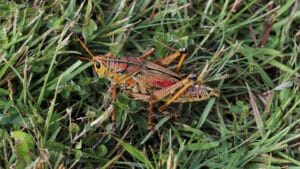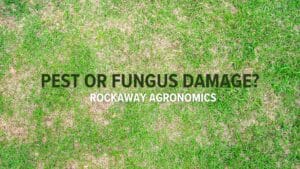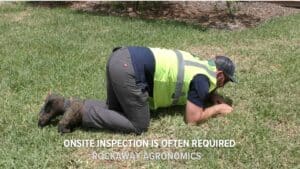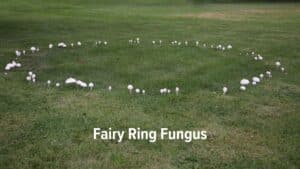
Summer Lawn Pests and Diseases
Here is a list of some common lawn pests and diseases that occur during the summer months in Florida.
1. Southern Chinch Bugs (Blissus insularis): These tiny insects are the most damage pest for Florida lawns as they feed on St. Augustine and Zoysia by sucking sap, causing the grass to turn yellow or brown and eventually die. Proper identification of chinch bugs early before infestation is the key to protecting your lawn. Turf stress from poor irrigation, cutting grass too short, and excessive use of high nitrogen fertilizer are invitations for chinch bugs.
2. Tropical Sod Webworms (Herpetogramma phaeopteralis): These caterpillars feed on grass blades, resulting in irregular patches of brown or dead grass. “Tropical sod webworms are part of a pest complex of warm season turf caterpillars in Florida that include fall armyworm (Spodoptera frugiperda), striped grass loopers (Mocis spp.), and the fiery skipper (Hylephila phyleus),” According to UF IFAS. “Indications are that this species does not survive the winter in the northern part of the state, and thus seems possible that some seasonal migration of this species may occur. Adults rest in sheltered and shrubby areas during the day and are active at dusk.”
3. Armyworms (Spodoptera frugiperda): Similar to sod webworms, armyworms can quickly devour grass blades, leading to patches of brown or dead grass. They are moth caterpilars that do their damage in the larval stage. Typically about 1.5″ in length the young armyworm will be greenish brown and turn darker brown as they mature. They don’t have strong cold tolerance and are mostly only an annual threat in the Southeastern United States and tropical regions at lower latitudes.
4. Easter Lubber Grasshoppers (Romalea microptera): Lubbers are large 1-3″ long, short-winged grasshoppers that with infestation cause significant damage to gardens, ornamental plants, and turf. Their seasonal lifecycle begins with eggs hatching in Spring followed by maturity and mating season July through September. 
5. Brown Patch Disease (Rhizoctonia): This fungal disease causes circular patches of brown, dead grass that can spread rapidly, especially during humid weather.
6. Large Patch Disease: (Rhizoctonia solani): Also known as zoysia patch, this fungal disease mainly affects warm-season grasses, in hot humit weather causing yellow or brown patches that can expand over time.
7. Dollar Spot (Clarireedia): This fungal disease is most common in Spring and early Summer forming small, bleach-white, straw-colored patches that resemble silver dollars. Dollar Spot often occurrs in areas with poor irrigation and/or low nitrogen levels. It requires 10-12 hours of moisture on the turf blades to take hold. When dollar spot is present white, fuzzy mycelium may also appear on grass blades in the morning dew.

8. Fairy Ring: This fungal disease creates circular, dark green rings in the grass, with mushrooms or toadstools appearing in or around the rings. They most commonly occur during the Summer rainy season arising from the network of hyphae that feeds on decaying wood and other decomposing organic material.
It’s important to regularly inspect your lawn for signs of pests or diseases and consult with your county extension office for specific treatment recommendations based on your area and grass type. Rockaway Agronomics division also provides lawn pest and disease control services for both residential and commercial clients in Northeast Florida. Contact us with your questions and to book a landscape maintenance consultation.
From our office in Atlantic Beach and satellites throughout Northeast Florida, Rockaway Inc proudly serves both commercial and residential landscape design, maintenance, lawn care, irrigation, and outdoor living carpentry client needs in Jacksonville, St Augustine, Atlantic Beach, Neptune Beach, Jacksonville Beach, Ponte Vedra, Nocatee, St. Johns, and Fernandina Beach.
